BUSI 3103 - Final Exam Review PDF

| Title | BUSI 3103 - Final Exam Review |
|---|---|
| Author | Oliver Riding |
| Course | Introduction to Organization Theory |
| Institution | Carleton University |
| Pages | 16 |
| File Size | 897.1 KB |
| File Type | |
| Total Downloads | 116 |
| Total Views | 182 |
Summary
Final Review...
Description
BUSI 3103: Organizational Theory
Winter 2017
Introduction to Organizational Theory Organization: (1) social entities that are (2) goal directed, (3) designed as deliberately structured and coordinated activity systems, and (4) linked to the external environment Organizational behaviour: a micro approach to organizations that focuses on the individuals within organizations as the relevant units for analysis Organizational theory: a macro examination of organizations because it analyzes the whole organization as a unit Organizational culture: a set of key values, beliefs, understanding, and norms shared by employees
Organizational Strategy STRATEGIC DIRECTION
Official goals: formally stated definition of business scope and outcomes the organization is trying to achieve! Operative goals: the actual operating procedures of the organization and explain what the organization is actually trying to do !
Competing-Values Model: organizations do many things and have many outcomes Strategy is a plan for interacting with the competitive environment to achieve organizational goals.
PORTER’S COMPETITIVE STRATEGIES
Focus: organization concentrates on a specific market! Differentiation: organization attempts to distinguish their products or services from others in the industry! Cost-leadership: organization tries to increase market share by emphasizing low cost compared to competitors! MILES AND SNOW’S STRATEGY TYPOLOGY
Managers seek to formulate strategies that will be congruent with the external environment! Prospectors: extend success through global expansions and finding new market opportunities! Defenders: concentrate upon existing operations and defending their home turfs! Reactors: respond arbitrarily to strategic actions initiated by competitors! Analyzers: take a middle ground approach between being prospectors and defenders! ORGANIZATIONAL EFFECTIVENESS
Resource-based approach: organizations must be successful in obtaining and managing valued recourses in order to be successful! Indicators: ability to obtain scarce and valued resources (e.g. knowledge, technology) from the environment; ability to use tangible (e.g. supplies, people) and intangible (e.g. knowledge, culture) resources! Internal process approach: measured as internal organizational health and efficiency ! Indicators: culture, moral; team spirit, teamwork; confidence, trust; decision-making; undistorted horizontal and vertical communication; rewards for performance; interaction between organization and others ! Usefulness: efficient use of resources! Goal approach: identifying an organization’s output goals and assessing how well the organization has attained those goals! Indicators: official goals vs operative goals (activities actually performed)! Usefulness: output is measurable! Limitation: measurement can be conflicting#
1
AG
BUSI 3103: Organizational Theory
Winter 2017
Organizational Structure KEY COMPONENTS TO ORGANIZATIONAL STRUCTURE
1. Formal reporting relationships! 2. Grouping of individuals and departments! 3. Systems design: communication, coordination, integration! VERTICAL INFORMATION LINAGES
Devices to increase control 1. Hierarchal referral: chains of command 2. Rules and plans: rules can be established so employees know how to respond without communicating directly with their manager (i.e. budget) 3. Vertical information systems: periodic reports, written information, computer-based communication HORIZONTAL INFORMATION LINKAGES
Devices to increase coordination 1. Information systems: allow more people to access information 2. Direct contact: liaisons, boundary spanners 3. Task Forces: solve temporary issues 4. Full-time integrator: product manager, project manager 5. Teams Functional: functional grouping places together who perform similar functions or work processes (eg. marketing, engineering finance) + Allows economies of scale within functional departments + Enables in-depth knowledge and skill development + Enables organization to accomplish functional goals + Is best with only one or a few products
- Slow response time to environmental changes - May cause decisions to pile up, hierarchy overload - Leads to poor horizontal coordination among departments
- Results in less innovation
Divisional: divisional grouping means people are organized according to what the organization produces (eg. toothpaste, shampoo) + Suited to fast change in unstable environment + Leaders to customer satisfaction because product responsibility and contact points are clear + Involves high coordination across functions + Best in large organizations with several products + Decentralizes decision making
- Eliminates economies of scale in functional departments
- Leads to poor coordination across product lines - Eliminates in-depth competence and technical specialization
- Makes integration and standardization across product lines difficult
Matrix: matrix grouping means an organization embraces two structural grouping alternatives simultaneously : divisional and functional + Achieves coordination necessary to meet dual demands from customers + Flexible sharing of human resources across products + Suited to complex decisions and frequent changes in unstable environment + Best in medium-sized organizations with multiple products 2
- Causes participants to experience dual authority, -
which can be frustrating and confusing Means participants need good interpersonal skills and extensive training Will not work unless participants understand it and adopt collegial rather than vertical-type relationships Requires great effort to maintain power balance AG
BUSI 3103: Organizational Theory
Winter 2017
Horizontal: means employees are organized around core work processes, end to end work, information, and materials flow that provide value directly to customers + Promotes flexibility and rapid response to changes in customer needs + Directs the attention of everyone toward the production and delivery of value to the customer + Each employee has a broader view of organizational goals + Promotes a focus on teamwork and collaboration + Improves quality of life for employees by offering them the opportunity to share responsibility, make decisions, and be accountable for outcomes
- Determining core processes is difficult and time consuming
- Requires changes in culture, job design, -
management philosophy, and information and rewards systems Traditional mangers may balk when they have to give up power and authority Requires significant training of employees to work effectively in a horizontal team environment Can limit in-depth skill development
Virtual Network: grouping is a loosely connected cluster of separate components, connected electronically + Enables even small organizations to obtain talent and resources worldwide + Gives a company immediate scale and reach without huge investments in factories, equipment, or distribution facilities + Enables the organization to be highly flexible and responsive to changing needs + Reduces administrative overhead costs
- Managers do not have hands-on control over many activities and employees
- Requires a great deal of time to manage -
relationships and potential conflicts with contract partners There is a risk of organizational failure if a partner fails to deliver or goes out of business Employee loyalty and organizational culture might be weak because employees feel they can be replaced by contract services
Hybrid: combine characteristics of various approaches tailored to specific strategic needs; two common types: 1. Functional and Divisional Structures 2. Functional and Horizontal Structures
3
AG
BUSI 3103: Organizational Theory
External Environment ENVIRONMENTAL DOMAIN
Task environment: includes sectors with which the organization interacts directly and that have a direct impact on the organization’s abilities to achieve its goals - industry, raw materials, market human resources, international ! General environment: includes sectors that might not have a direct impact on the daily operations of a firm but will indirectly influence it - government, sociocultural, technology, financial resources, economic conditions!
Winter 2017
Closed systems do not depend on its environment; open systems must interact with the environment to survive. Organizational environment is defined as all the elements that exist outside the boundary of the organization that have the potential to affect all or part of the organization Domain is a territory an organization stakes out for its products, services, and markets (organization’s niche)
ADAPTING TO ENVIRONMENTAL UNCERTAINTY
Environmental uncertainty: occurs when decision makers do not have sufficient information about environmental factors and have a difficult time predicting external changes! More positions and departments: more complexity requires more specialties requires more training requires more recruitment requires more collaboration! Buffering: supports the technical score and exchange materials, resources, and money between the environment and the organization! Boundary-spanning: links and coordinates an organization with key elements; detecting and brining information about changes into the organization, sending information into the environment! Differentiation: the differences in cognitive and emotional orientations among managers in different functional departments, and the difference in formal structure among these departments! Integration: the quality of collaboration among departments! Mechanistic: when external environment was stable, the internal organization was characterized by rules, procedures, and a clear hierarchy of authority • Tasks are brown down into specialized, separate parts • Tasks are rigidly defined • There is a strict hierarchy of authority and control, and there are many rules • Knowledge and control of tasks are centralized at the top of the organization • Communication is vertical
Organic: in rapidly changing environments, the internal organization was much looser, free-flowing, and adaptive • Employees contribute to the common tasks of the department • Tasks are adjusted and redefined through employee teamwork • There is less hierarchy of authority and control, and there are few rules • Knowledge and control of tasks are located anywhere in the organization • Communication is horizontal
Planning, Forecasting, and Responsiveness: in uncertain environments, planning becomes more important as a way to keep the organization geared for a coordinated, speedy response! CONTROLLING ENVIRONMENTAL RESOURCES
Ownership: buying a part or a controlling interest un another company (fb bought Instagram)! Formal strategic alliances: when there is a high level of complementarity between two organizations, firms often partner with each other to achieve mutual gains! Cooptation: occurs when leaders from important sectors in the environment are made part of an organization!
4
AG
BUSI 3103: Organizational Theory
Winter 2017
Executive recruitment: transferring or exchanging executives also offers a method of establishing favourable linkages with external organizations (someone from Apple leaving for Microsoft, brings knowledge, then brings their friends like poaching)! Advertising and public relations: organizations spend large amounts of money to influence the taste of consumers (hockey board ads) ! Controlling the environmental domain: change of domain, political activity, trade associations, illegitimate activities! Change of domain: an organization can seek new environmental relationships and drop old ones! Political activity: influencing government legislation and regulation; erecting regulatory barriers against new competitors or to quash unfavourable legislation! Trade associations: organizational partnerships influencing the external environment! Illegitimate activities: certain conditions (eg. low profits, pressure from senior managers, scarce environmental resources) may lead managers to adopt behaviours not considered legitimate! FRAMEWORK FOR ORGANIZATIONAL RESPONSES TO UNCERTAINTY
Simple-Complex Dimension: the more external factors that regularly influence the organization and the greater number of other organizations in a domain, the greater the complexity Stable-Unstable Dimension: an environmental domain is stable if it remains he same over a period of time; under unstable conditions, environmental elements shift abruptly and unexpectedly
5
AG
BUSI 3103: Organizational Theory
Strategic Alliances INTER-ORGANIZATIONAL FRAMEWORK
Winter 2017
An organizational ecosystem is a system formed by the interaction of a community of organizations and their environment
Resource Dependence: resource dependence theory argues that organizations try to minimize Organizational Ecosystems: inter-organizational relationships their dependence on other organizations for the are the relatively enduring resource transactions, flows, and supply of important resources and try to linages that occur among two or more organizations influence the environment to make resources available! Three factors that determine dependence on organizations: 1. adapt or alter interdependent relationships! 2. interlocking directorships! 3. trade associations, trade agreements, or mergers! Population-ecology: focuses on organizational diversity and adaptation with a population of organizations! Population: set of organizations engaged in similar activities with similar patterns of resource utilization and outcomes! Organizational form and niche: the organizational form is an organization’s specific technology, structure, products, goals, and personnel, which can be selected or rejected by the environment! Niches: domains of unique environmental resources and needs! Variation: large number of variations appear in the population of organizations! Selection: some organizations find a niche and survive! Retention: a few organizations grow large and become institutionalized in the environment! Institutionalism: perspective describes how organizations survive and succeed through congruence between an organization and the expectations from its environment! Legitimacy is defined as the general perspective that an organization’s actions are desirable, proper, and appropriate within the environment’s system of norms, values, and beliefs! Mimetic forces: the pressure to copy or model other organizations! Coercive forces: external pressures exerted on an organization to adopt structures, techniques, or behaviours similar to other organizations! Normative forces: pressures to change to achieve standards of professionalism, and to adopt techniques that are considered by the professional community to be up to date and effective! Collaborative networks: Companies join together to become more competitive and share resources Traditional Orientation: Adversarial
New Orientation: Partnership
Low dependence Suspicion, competition, arm’s length Detailed performance measures, closely monitored Price, efficacy, own profits Limited information and feedback Legal resolution of conflict Minimal involvement and up-front investment, separate resources Short-term contracts Contract limiting the relationship
High dependence Trust, addition of value to both sides, high commitment Loose performance measures, problems discussed Equity, fair dealing, both profit Electronic linkages to share key information, problem feedback, and discussion Mechanisms for close coordination, people on-site Involvement in partner’s product design and production, shared resources Long-term contracts Business assistance beyond the contract
6
AG
BUSI 3103: Organizational Theory
International Environments MOTIVATIONS FOR GLOBAL EXPANSION
Economies of scale: achieving lower costs through large volume production! Economies of scope: having a presence in many product lines, technologies, or geographic locations! Low-cost production factors: obtain raw materials at the lowest possible cost!
Winter 2017
Standardization: policies that ensure all branches of the company operate in the same way Globalization strategy: the standardization of product design and advertising strategy throughout the world Multi-domestic strategy: competition in each country is handled independently of competition in other countries
STAGES OF INTERNATIONAL DEVELOPMENT
Domestic stage: domestically oriented though managers are aware of the global environment! International stage: company takes exports seriously and begins to think multi-domestic! Multinational stage: has established marketing, manufacturing in several foreign countries! Global stage: transcends any single country! INTERNATIONAL STRUCTURES
Global product structure: product divisions responsible for global operations; managers responsible for planning, organizing, and controlling functions for any market around the world ! Global geographical structure: each division has full control of functional activities; usually mature product lines and stable technologies! THE GLOBAL ORGANIZATIONAL CHALLENGE
Increased complexity and differentiation: create a structure to operate in numerous countries that differ in economic development, language, political systems, government regulations, cultural norms, values! Need for integration: high differentiation requires more time and resources to be devoted to achieving coordination because employees’ attitudes, goals, and work orientations differ widely! Transfer of knowledge and innovation: organizations need systems that promote the transfer of knowledge and innovation across the global enterprise! GLOBAL COORDINATION MECHANISMS
Global teams: cross-boarder work groups made up from multi-skilled, multi-international members whose activities span multiple countries! Stronger headquarters planning: take an active role in planning, scheduling, and control to keep the widely distributed pieces of the global organization working together and moving in the same direction! Specific coordination roles: creating specific organizational roles or positions for coordination in a way to integrate all the pieces of the enterprise to achieve a strong competitive position! CULTURAL DIFFERENCES IN COORDINATION AND CONTROL
Centralized (Japan): + top managers actively direct and control oversees operations; - headquarters can become overloaded and make slow decisions! Decentralized (Europe): + international units have a high level of independence and decision-making authority; - maintaining shared goals, values, and priorities! Formalized (North America): + organizations have delegated responsibility to international divisions; - cost of setting up complex systems, policies, and rules are high#
7
AG
BUSI 3103: Organizational Theory
Manufacture & Service Technologies CONTEMPORARY APPLICATIONS
Flexible manufacturing systems: new products can be designed and prototypes can be made without human hands! Lean manufacturing: highly trained employees a every stage of production; costs waste and improves quality; incorporates technological elements; paved the way for mass customization! Mass customization: refers to using mass-production technology to quickly and cost-effectively assemble goods that are uniquely designed to fit the demands on individual customers! Service firms: primary purpose through the production and provision of services, such as education health care, etc. !
Winter 2017
I - Small-batch and unit production: assembles small orders to meet specific need...
Similar Free PDFs

BUSI 3103 - Final Exam Review
- 16 Pages

BUSI 411 - Final Paper
- 14 Pages

Chem Final Exam Review
- 12 Pages

Final Exam - Review notes
- 92 Pages

Bio Final Exam Review
- 2 Pages

Final EXAM Review booklet
- 5 Pages
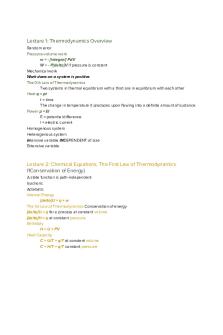
CHEM303 final exam review
- 4 Pages

Psychology Final Exam - Review
- 13 Pages
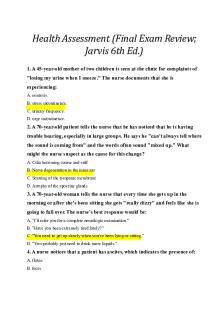
Jarvis Final Exam Review
- 12 Pages
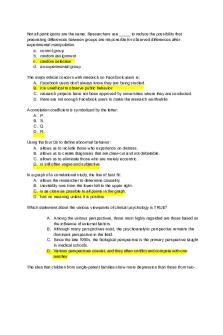
Final exam review
- 96 Pages
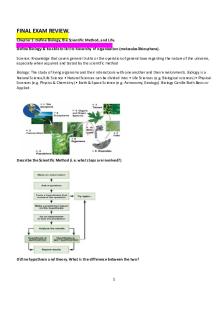
Final Exam Review
- 48 Pages
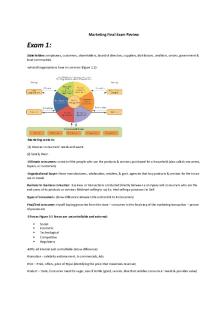
Marketing Final Exam Review
- 15 Pages
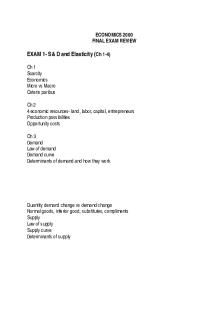
Final exam review
- 8 Pages
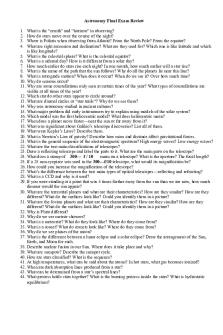
Astronomy Final Exam Review
- 2 Pages
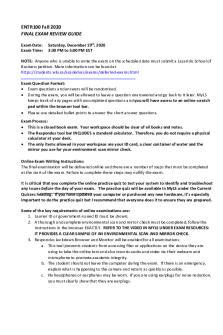
Final Exam Review Guide
- 4 Pages

Final exam review flsp4420
- 5 Pages
Popular Institutions
- Tinajero National High School - Annex
- Politeknik Caltex Riau
- Yokohama City University
- SGT University
- University of Al-Qadisiyah
- Divine Word College of Vigan
- Techniek College Rotterdam
- Universidade de Santiago
- Universiti Teknologi MARA Cawangan Johor Kampus Pasir Gudang
- Poltekkes Kemenkes Yogyakarta
- Baguio City National High School
- Colegio san marcos
- preparatoria uno
- Centro de Bachillerato Tecnológico Industrial y de Servicios No. 107
- Dalian Maritime University
- Quang Trung Secondary School
- Colegio Tecnológico en Informática
- Corporación Regional de Educación Superior
- Grupo CEDVA
- Dar Al Uloom University
- Centro de Estudios Preuniversitarios de la Universidad Nacional de Ingeniería
- 上智大学
- Aakash International School, Nuna Majara
- San Felipe Neri Catholic School
- Kang Chiao International School - New Taipei City
- Misamis Occidental National High School
- Institución Educativa Escuela Normal Juan Ladrilleros
- Kolehiyo ng Pantukan
- Batanes State College
- Instituto Continental
- Sekolah Menengah Kejuruan Kesehatan Kaltara (Tarakan)
- Colegio de La Inmaculada Concepcion - Cebu